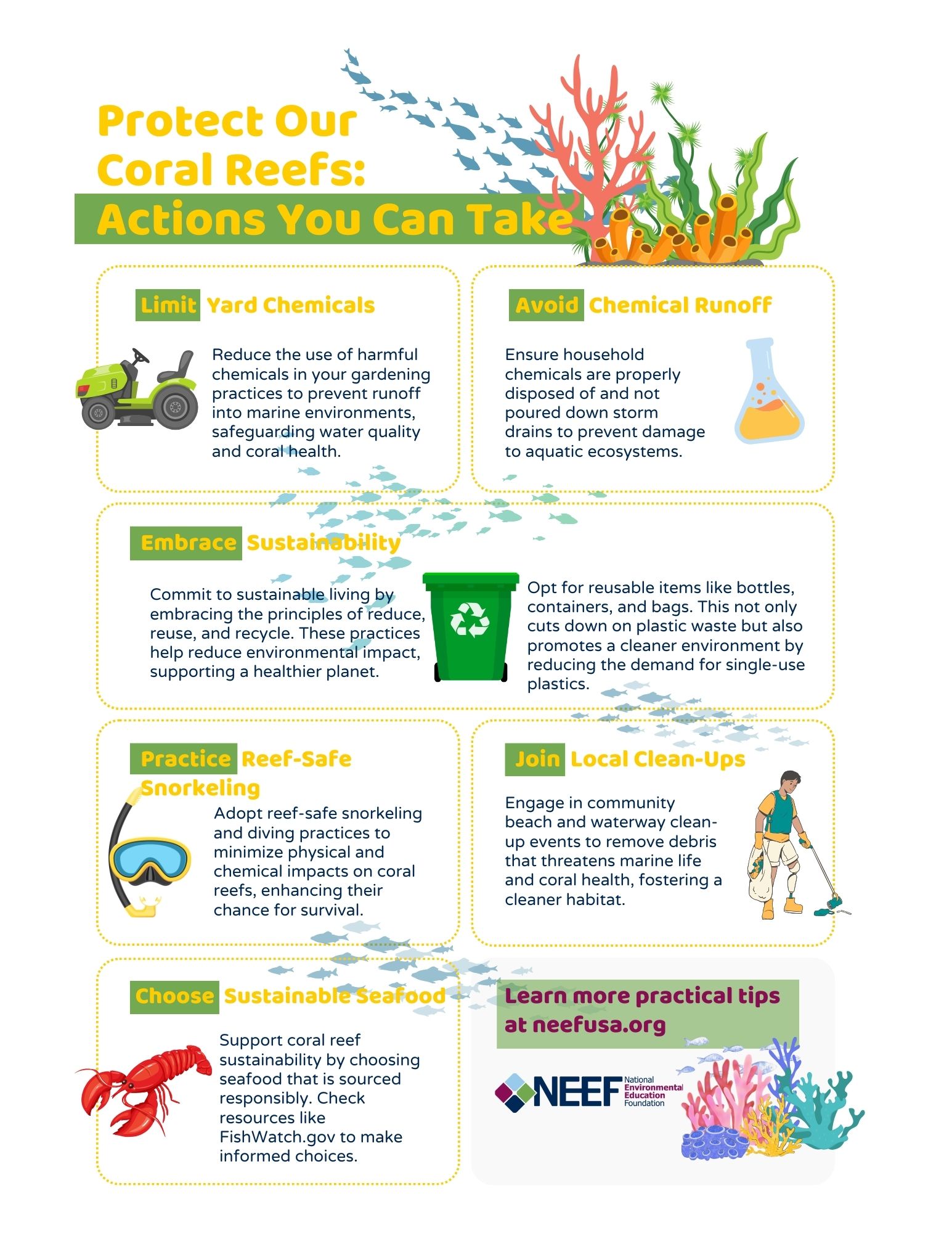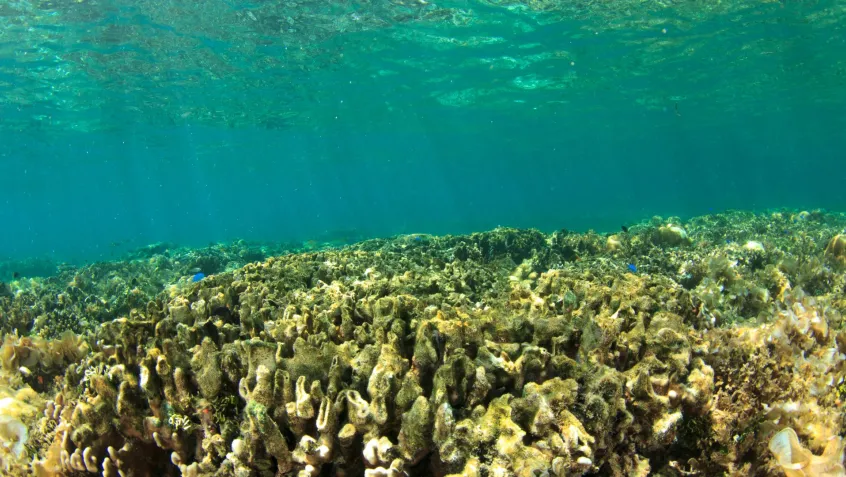
Did You Know?
- From 1901 through 2023, sea surface temperature rose at an average rate of 0.14°F per decade.
- The average global sea surface temperature has been consistently higher during the past three decades than at any other time since reliable records began in 1880.
The ocean covers more than two-thirds of the earth's surface and plays a very important role in regulating global weather and climate. These bodies of water absorb an estimated 91% of the extra heat energy trapped in the planet’s atmosphere by excess greenhouse gases. This raises the temperature of the water at the sea surface.
Why is Warming Sea Water a Problem?
Since the ocean continually interacts with the atmosphere through the water cycle, an increase in the average global sea surface temperature can have profound impacts on climate and weather systems. A higher sea surface temperature has led to an increase in the amount of water vapor over the ocean, increasing the risk of heavy rain and snow events. This higher temperature also has the potential to shift storm tracks and contribute to droughts in some areas.
Rising ocean temperatures also cause rising sea levels through thermal expansion, as well as shifts in the distribution of marine species, many of which rely on specific thermal and nutritional conditions. Additionally, hotter temperatures alter deep ocean currents' circulation patterns, which are crucial for transporting warm and cold water across the globe.
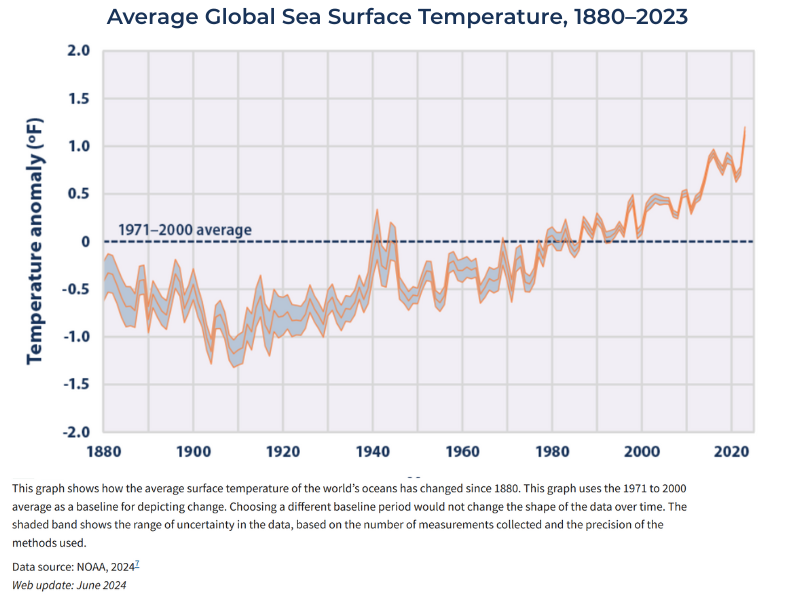
Source: EPA
With the help of satellite technology, we can now track and visualize the increasing daily sea surface temperature. This detailed view allows scientists and the public to see real-time changes in oceanic conditions, enhancing our understanding of how global warming impacts marine ecosystems.
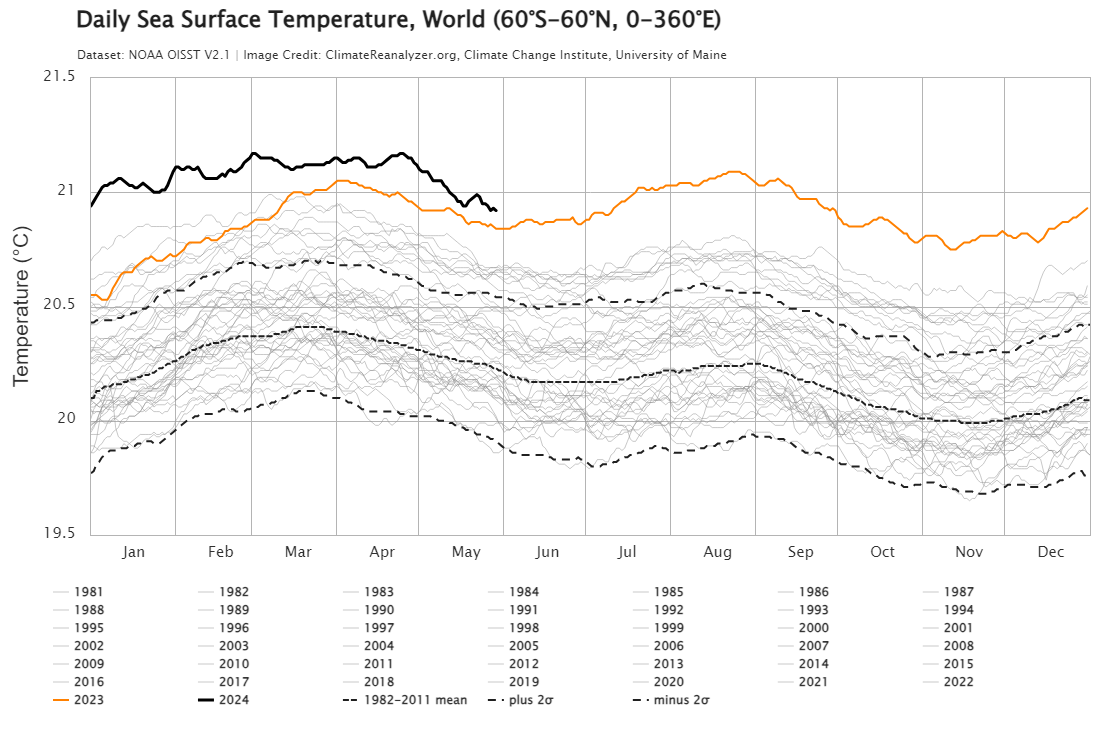
Source: Climate Reanalyzer Data from Climate Change Institute, University of Maine. Retrieved May 28, 2024
By understanding the trends in sea surface temperatures, we can better anticipate and mitigate the impacts on coral reefs and other sensitive marine habitats. This proactive approach is vital in preserving the health of our oceans amidst the challenges posed by climate change. Data tracking is essential for addressing the increasingly severe threats facing US coral reefs due to climate change.
US Coral Reefs in a Warming Ocean
US coral reefs are a beautiful part of the ocean and are crucial for marine life and coastal protection. Unfortunately, they are increasingly threatened by changes in the ocean's temperature and chemistry.
Coral reefs are located in the shallow, warm waters of the tropics and subtropics. They serve as critical habitats and food sources for various marine species. In the US, these reefs are found near the Florida Keys, Hawaii, Puerto Rico, and other Pacific territories. Not only are they key tourist destinations, they also provide essential protection against coastal erosion and provide sand for our beaches.
Coral reefs also provide economic benefits. According to a report by the US Geological Survey, Hawaii's coral reefs bring in approximately $836 million through shoreline protection and flood prevention.
Rising ocean temperatures and increased acidity from greenhouse gas emissions are harming US coral reefs. These changes cause more frequent coral bleaching and diseases. They also slow down coral growth and their overall health.
Some US coral reef systems face greater reduction than others. In Florida, stony coral cover declined by 53.8% from 1996 to 2015 due to thermal stress, disease, and damage from hurricanes. Sponges have also decreased in the Florida Keys since 1996 from similar causes.
To understand how these changes affect coral reefs, it's important to trace the step-by-step impact of climate change on these delicate ecosystems.
The Impact of Climate Change on Coral Reefs
Climate change, driven by increased greenhouse gases from activities like burning fossil fuels and deforestation, is having a profound impact on coral reef ecosystems. The first step in this chain of impact is the rise in ocean temperatures, which leads to coral bleaching and increases the susceptibility of corals to diseases.
As ocean levels rise due to melting ice caps and thermal expansion, sediments near coastlines are stirred up, smothering corals. The changing climate also modifies precipitation patterns and storm frequencies, leading to heavier runoff and stronger storms.
The runoff from this activity clouds the water with pollutants and sediments, cutting off light essential for coral health and fostering harmful algal blooms. Shifts in ocean currents disrupt the transportation of coral larvae and the availability of nutrients, compounding the stress on coral systems.
Finally, increased levels of CO2 lead to ocean acidification, reducing the pH of seawater and hindering coral growth and structural integrity.
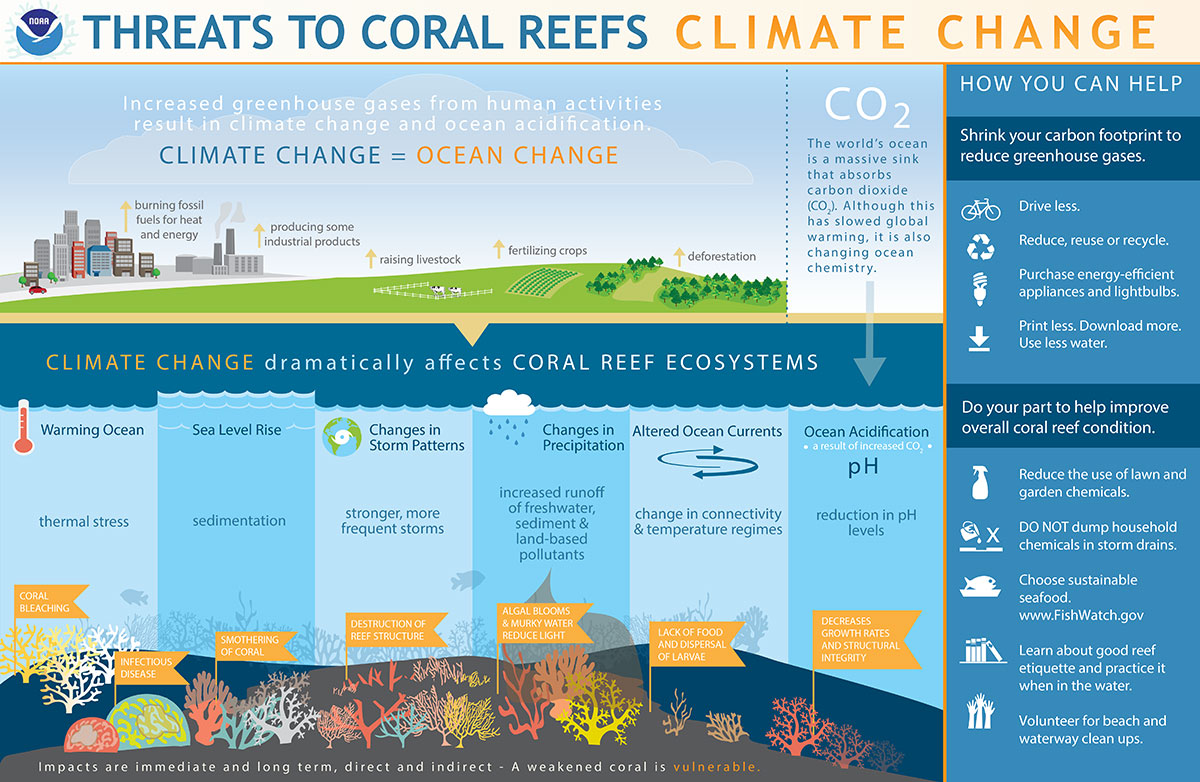
Source: NOAA
The domino effect started by warming oceans has immediate and long-term effects on US coral reefs. As the oceans around the country continue to warm, it’s crucial that we each do our part to protect coral reefs.
Action for America's Reefs
Across the United States, initiatives are underway to conserve coral reefs, which are vital to marine biodiversity and coastal protection. These efforts involve collaboration among various government agencies, local communities, and international partners, focusing on supporting reef health.
In Florida, the Coral Reef Evaluation and Monitoring Project (CREMP) has been tracking the health of coral reefs since 1996, providing crucial data to inform conservation strategies. This project is part of the Florida Keys National Marine Sanctuary’s Water Quality Protection Program, which has successfully improved water treatment and reduced pollutants affecting reefs.
The EPA has seen the launch of the Trash-Free Waters initiative in Puerto Rico, aiming to eliminate aquatic trash through collaborative efforts among agencies, states, and businesses. This initiative is part of a strategy to protect marine environments from pollution.
The EPA also supports the Hawaii Coral Reef Working Group, which coordinates coral reef management efforts in the Hawaiian Islands. This group provides guidance to the State of Hawaii’s Coral Reef Program on conservation actions, including community outreach and scientific research, that aims to mitigate the main threats to Hawaii's coral reefs.
These concerted efforts reflect a robust commitment to preserving coral reefs through science-based management, restoration initiatives, and pollution control. They highlight the critical role of coral reefs in marine ecosystems and their importance to coastal communities.
As daily sea surface temperatures continue to rise, helping with coral reef conservation is more important than ever.
Source: NEEF
What You Can Do to Help
Now that you understand the scope of the problem, what steps can you take to combat the negative effects of a warming ocean? We’ve provided some suggestions below.
Hands-On Environmental Action
- Make a difference for the environment while learning new skills and building your resume by volunteering outside.
- Discover ways that you can save money and energy at home all year long.
- Help reduce plastic pollution by cutting your reliance on plastics and choosing reusable items like bottles, containers, and bags.
- Make environmental education hands-on with these simple upcycle projects you can do at home.
Minimize Your Environmental Impact
- Minimize your driving to lower greenhouse gas emissions.
- Embrace the principles of reducing, reusing, and recycling.
- Opt for household appliances that are energy-efficient.
- Cut down on food waste and limit your home water usage.
Take Action to Enhance Coral Reef Health
- Limit the application of chemicals in your yard.
- Avoid disposing of household chemicals into storm drains.
- Select seafood that is eco-friendly.
- Keep your local waterways trash-free by participating in local clean-up events for beaches and waterways.
Updated 5/30/2025
